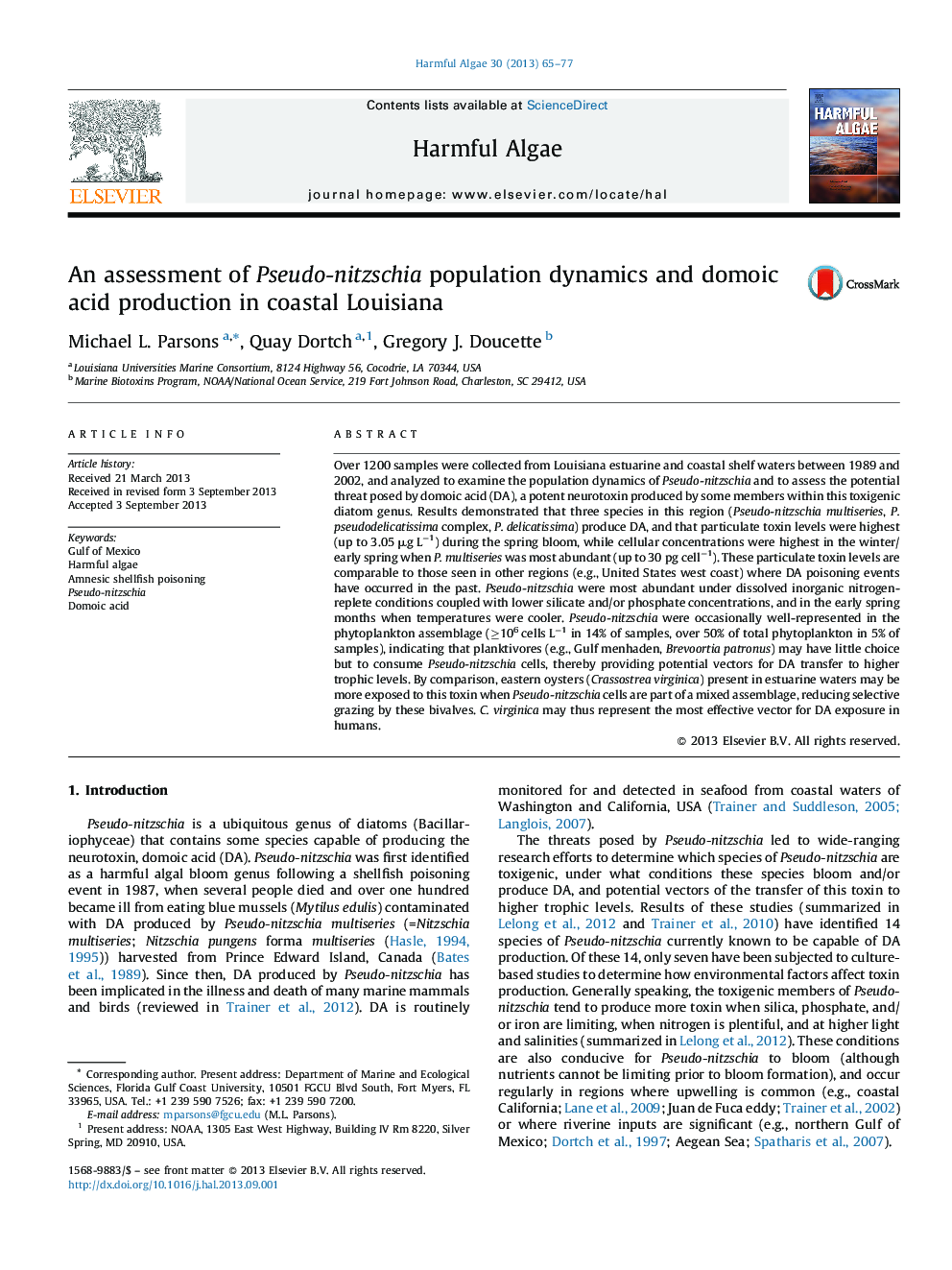| کد مقاله | کد نشریه | سال انتشار | مقاله انگلیسی | نسخه تمام متن |
|---|---|---|---|---|
| 4545416 | 1626941 | 2013 | 13 صفحه PDF | دانلود رایگان |

• Pseudo-nitzschia is a toxigenic planktonic diatom genus.
• Some species are capable of producing the neurotoxin, domoic acid.
• Domoic acid has caused human, marine mammal, and marine bird deaths in the past.
• This study presents scenarios for domoic acid production and transfer to higher trophic levels in coastal Louisiana.
Over 1200 samples were collected from Louisiana estuarine and coastal shelf waters between 1989 and 2002, and analyzed to examine the population dynamics of Pseudo-nitzschia and to assess the potential threat posed by domoic acid (DA), a potent neurotoxin produced by some members within this toxigenic diatom genus. Results demonstrated that three species in this region (Pseudo-nitzschia multiseries, P. pseudodelicatissima complex, P. delicatissima) produce DA, and that particulate toxin levels were highest (up to 3.05 μg L−1) during the spring bloom, while cellular concentrations were highest in the winter/early spring when P. multiseries was most abundant (up to 30 pg cell−1). These particulate toxin levels are comparable to those seen in other regions (e.g., United States west coast) where DA poisoning events have occurred in the past. Pseudo-nitzschia were most abundant under dissolved inorganic nitrogen-replete conditions coupled with lower silicate and/or phosphate concentrations, and in the early spring months when temperatures were cooler. Pseudo-nitzschia were occasionally well-represented in the phytoplankton assemblage (≥106 cells L−1 in 14% of samples, over 50% of total phytoplankton in 5% of samples), indicating that planktivores (e.g., Gulf menhaden, Brevoortia patronus) may have little choice but to consume Pseudo-nitzschia cells, thereby providing potential vectors for DA transfer to higher trophic levels. By comparison, eastern oysters (Crassostrea virginica) present in estuarine waters may be more exposed to this toxin when Pseudo-nitzschia cells are part of a mixed assemblage, reducing selective grazing by these bivalves. C. virginica may thus represent the most effective vector for DA exposure in humans.
Journal: Harmful Algae - Volume 30, December 2013, Pages 65–77